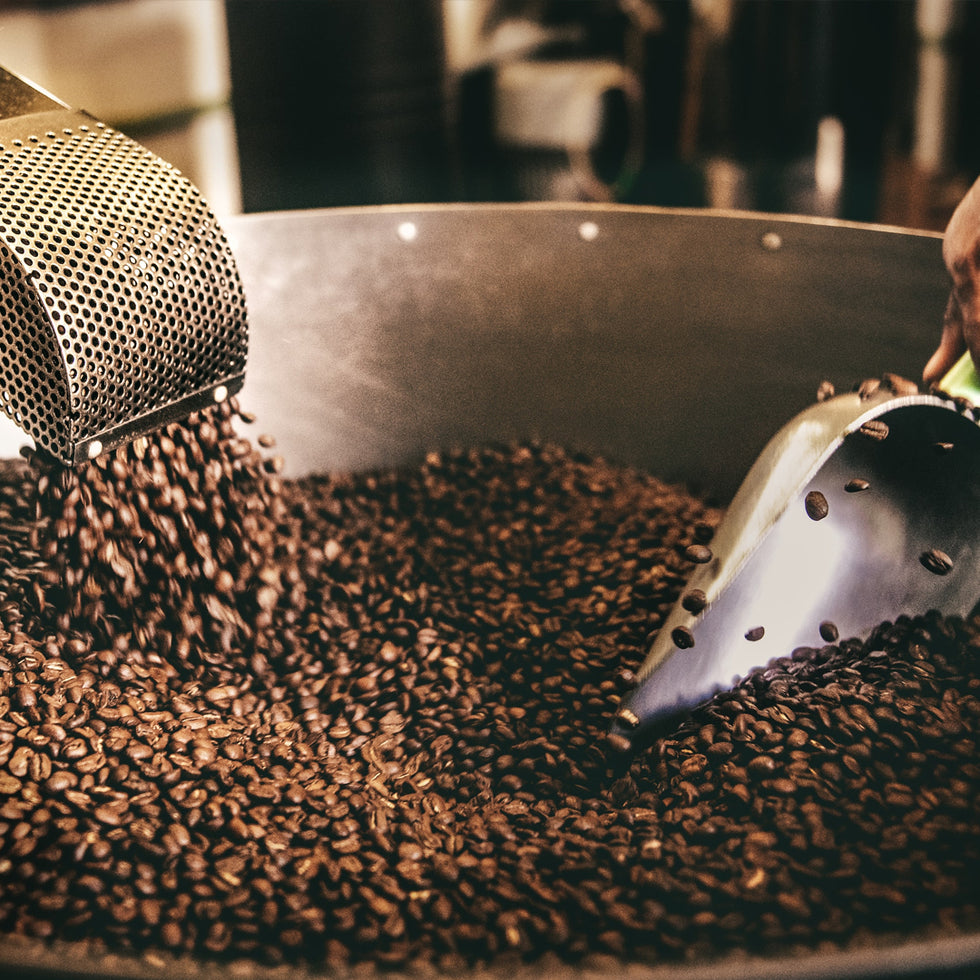Though the world may be getting smaller, the world of coffee is vastly bigger than it was just a few decades ago. Beans from more countries than ever before are available for purchase—and that means more new and exotic flavours to explore for when buying coffee.
In this blog, we’re going to dive deeper into the coffee growing countries of Asia and the Arabian Peninsula. There are many of them, so we’ll primarily focus especially on the countries that grow specialty-grade coffee.
Thailand

Thailand is coming into its own as a coffee producing country. Growers have produced coffee since the early 1900’s, but coffee wasn’t exported until 1979, and the exports were mainly robusta beans. Over 90% of the coffee grown in still of the robusta variety, but we’re finding an emergence of specialty-grade arabicas coming from the Northern regions of the country.
For the most part, these specialty-grade exports are staying in Asia, which means many Western coffee lovers don’t even realize that Thailand is growing some stunning coffee.
Common Flavours: Chocolate, spice, floral, citrus acidity
Processing Methods: Washed
Notable Growing Regions: Lanna, Chiang Rai, Chiang Mai
India

Muslim pilgrim Baba Budan brought coffee to India in the early 1600’s—illegally. He smuggled seeds out of Mecca, which led India to become of the first countries to grow coffee outside of Eastern Africa and the Arabian Peninsula.
Most coffee plants were arabica species until a disease struck and nearly wiped out the country’s coffee industry in in the 1850’s. Farmers across the country replanted robusta variety plants. So, while most coffee out of India is low-grade and bitter, India’s worth mentioning for two reasons.
- There is some stellar arabica coffee exported from India
- And there’s also the world’s first specialty-grade robusta
Those top-notch robustas are still very rare, but maybe we’ll see more entering the international market over the next few years.
Common Flavours: Very spicy (cardamom, nutmeg, clove), full body, bright acidity
Processing Methods: Washed, Natural, Monsooned
Notable Growing Regions: Baba Budan, Niligris, Shevaroys
Myanmar

Formerly known as Burma, Myanmar is another country that’s beginning to blossom as a specialty coffee producer. It’s history, however, is a shroud of mystery. Coffee arrived by British settlers in 1815, but after that, not much can be confirmed.
We know that coffee didn’t really take off as an export until the early 1900’s. We know that in 2000 the Burmese government cut off exports to many countries, especially in the West. But other than that, the information regarding exports and history is kept secret.
The coffee, however, isn’t a secret anymore. Global exports have been enabled again and the world has a new love affair with Myanmar’s rich, exotic tasting coffee.
Common Flavours: Floral, fruity, bright acidity, complex, light body
Processing Methods: Washed, Natural
Notable Growing Regions: Shan State, Mandalay
Vietnam

As the 2nd largest exporter of coffee in the world, we couldn’t leave Vietnam out. It grows bitter robusta coffee almost exclusively, but it’s a major player in the world’s greater coffee industry and supplies a large portion of the world’s instant coffee.
The Vietnamese government is actually in a stage of incentivizing farmers to trade their robusta for arabica plants, but it’ll be many years before we see a significant number of specialty-grade arabica exports from the country.
Common Flavours: Bitter, earthy, spice
Processing Methods: Washed
Notable Growing Regions: DakLak, Gia Lai, Kontum, Dong Nai, Ba Ria–Vung tau
Yemen

On the other side of Asia lies a country that played a dramatic role in the expansion of coffee: Yemen. The port of Al Mokha was the first port to trade coffee commercially in the world. It was the Yemeni who opened the world’s first coffeehouses. And it was coffee lovers in Yemen who invented the Turkish coffee brewing method.
Unfortunately, Yemen has faced constant hardship since the fall of the Ottoman Empire. Locked in a multi-decade civil war and facing a terrible drought and famine, the region’s coffee industry is struggling to stay afloat.
Common Flavours: Earthy, chocolatey, winey acidity
Processing Methods: Natural
Notable Growing Regions: Bani Mater, bani Hammad, Bura’a, Haraaz, Haimateen
Laos, Cambodia, and even China also grow coffee in Eastern Asia—and there are even small coffee producers in Western Asia as well—but we’ll leave them for another time.
Now that you have a birds-eye view of the coffee growing countries of Asia and Arabia, it’s time you taste them. Check out our current lineup of specialty-grade coffees and explore the flavours of this diverse (and geographically massive) coffee growing region. If this all seems a bit too much work and you'd rather us airdrop you delicious, expertly sourced coffee beans on the regular then simply sign up to our coffee subscription box here!
